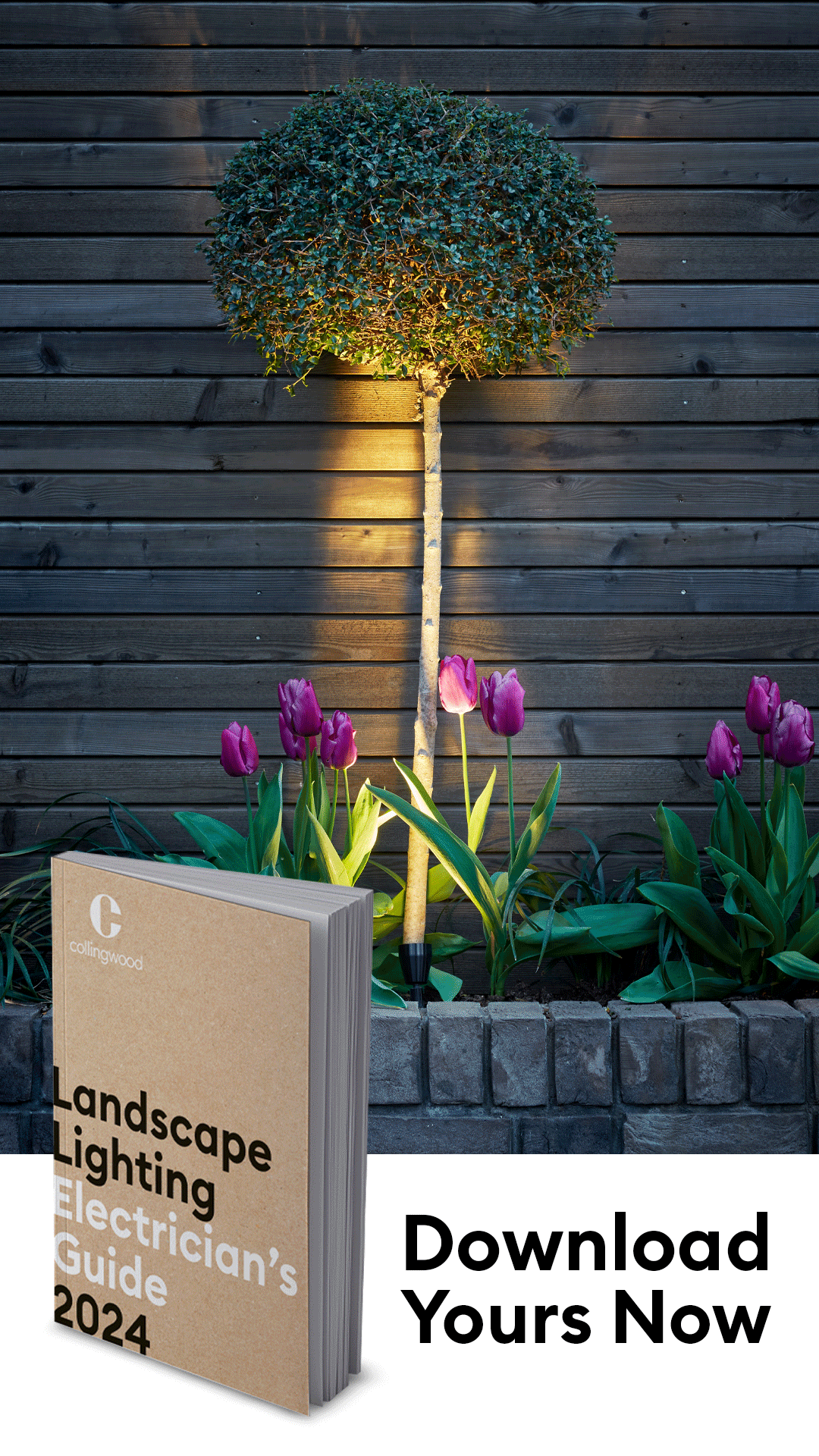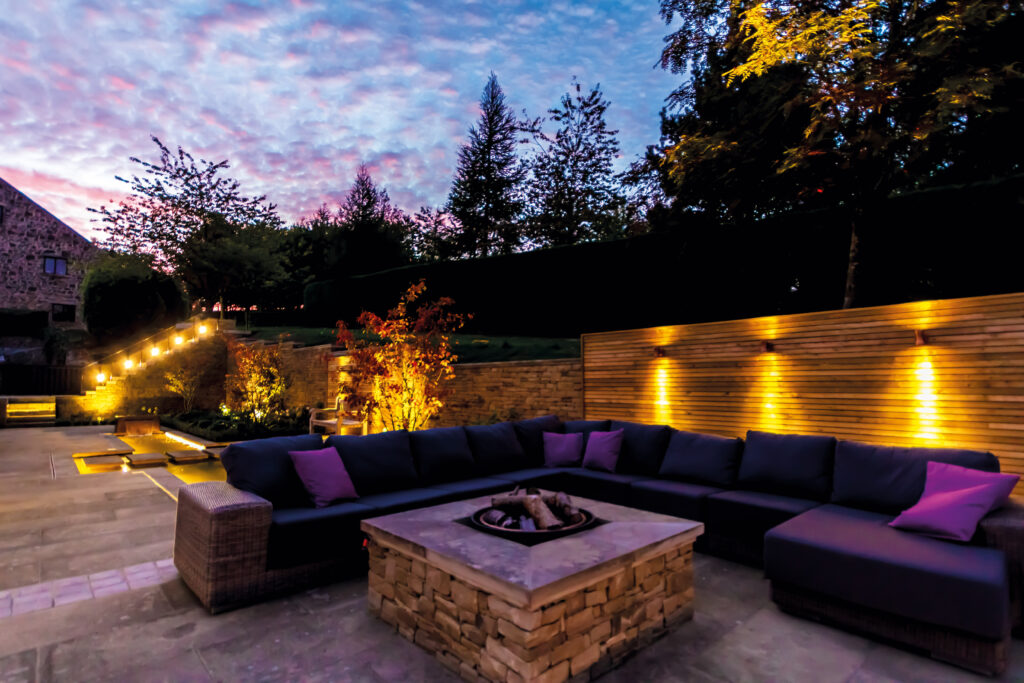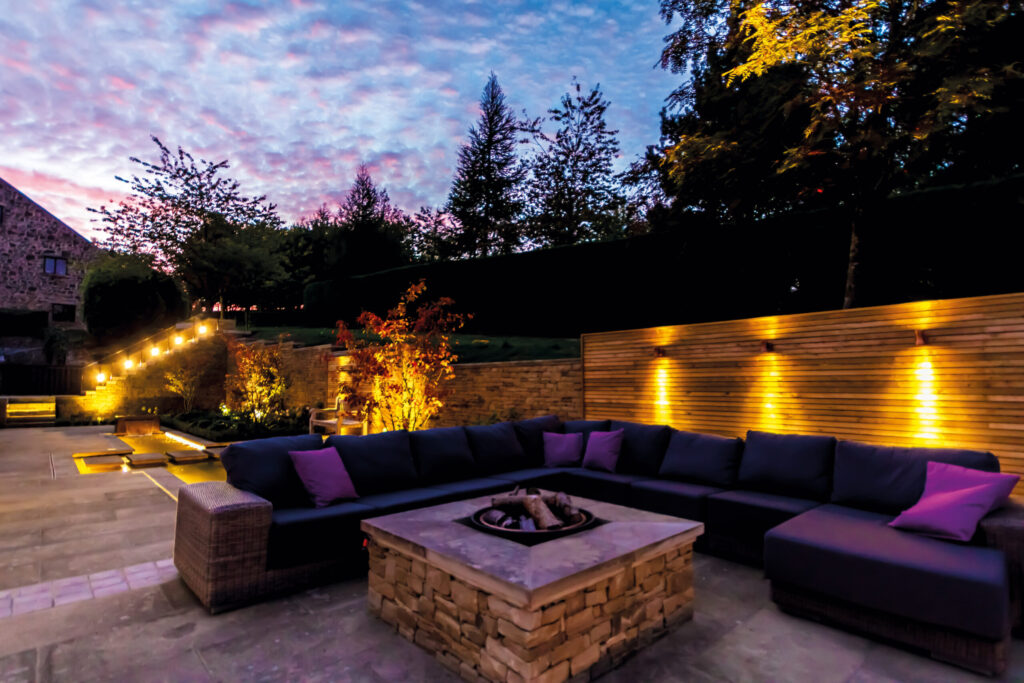When it comes to outdoor hospitality lighting, creating the right atmosphere is essential for making guests feel welcome and at ease.
A good landscape lighting scheme will extend the space available for drinking and eating at pubs, restaurants and hotels as evenings get warmer. Creating the right ambience will also make people want to enter a venue and then dwell and spend more money.
Whether you are the owner of such a business or an electrician looking to provide advise and win extra business, knowing some basics about lighting design for the outdoors can make all the difference.
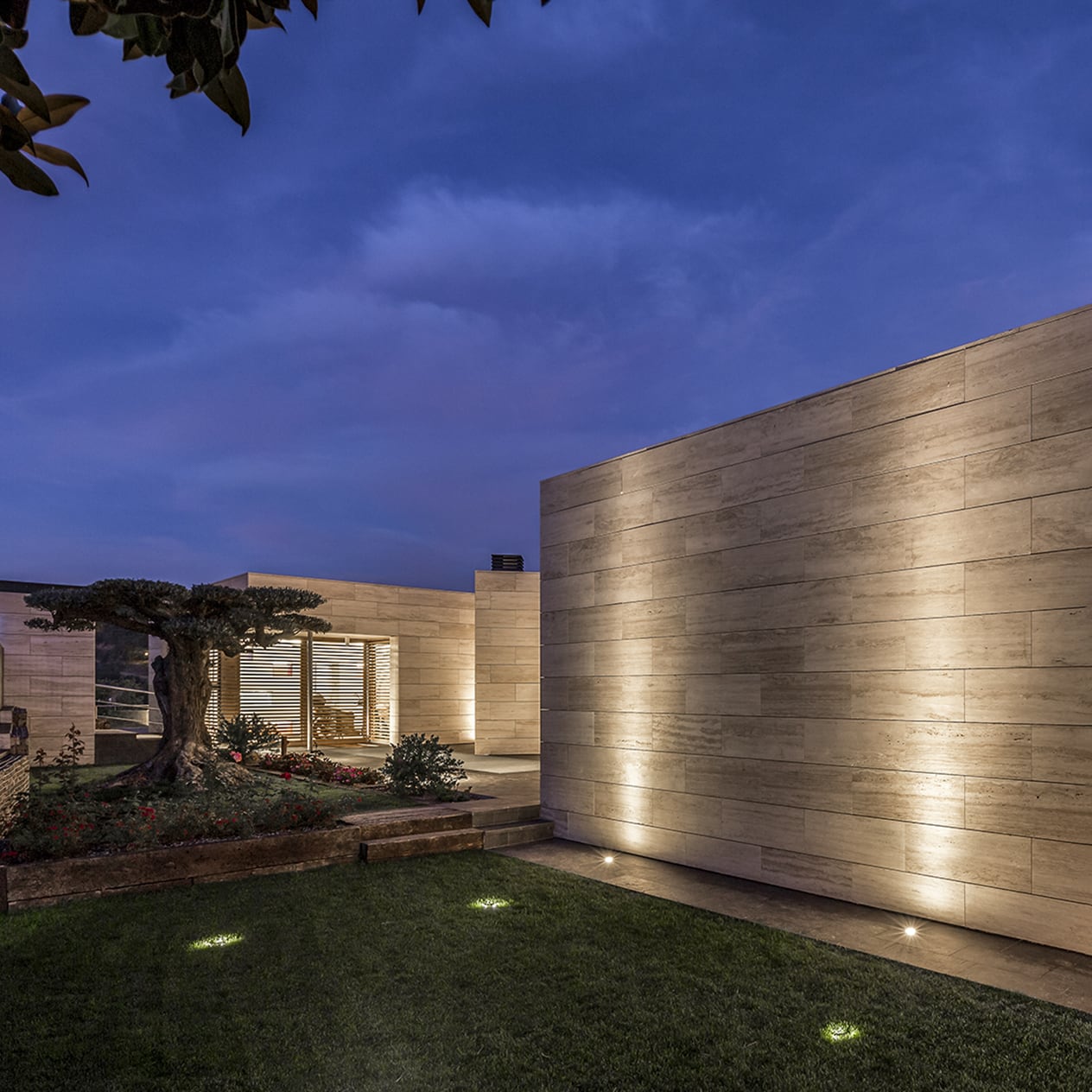
Contrast light and shade
One of the biggest mistakes to avoid is to over light a landscape. It is not like an indoor space where minimum lux levels are needed for work, what hospitality wants is for you to create a welcoming ambience. Good landscape lighting makes full use of contrasting light and shade.
Generally, you can break such schemes into three areas.
Functional spaces need enough lighting for a task. This could be for outdoor cooking or storage, but also more subtle lighting for pathways and steps.
Entertainment areas need to create ambience and for most hospitality businesses it is wise to plan this area carefully.
And then to add atmosphere, think about what features could be lit. This might include interesting features on the building, sculptures, plants or water.
Think about what you want to highlight and what you will allow to fall into shade. By using light sparingly, texture will come to the fore.
Highlighting architecture
The outside of a building is the first thing that a visitor will see. Good external lighting will create a good impression and draw people inside.
Remembering that less is more, think about what you want to light and pick out features or textures that you want to highlight. It could be the entrance, signage or perhaps some columns or a balcony. It is vital that you avoid any light spillage into other areas that could cause glare so check the beam angle of the fitting.
Ground lights are often a good option because they are hidden in the day and will provide some focused uplighting as daylight fades. Remember they could become submerged in water so make sure that they are IP68 rated
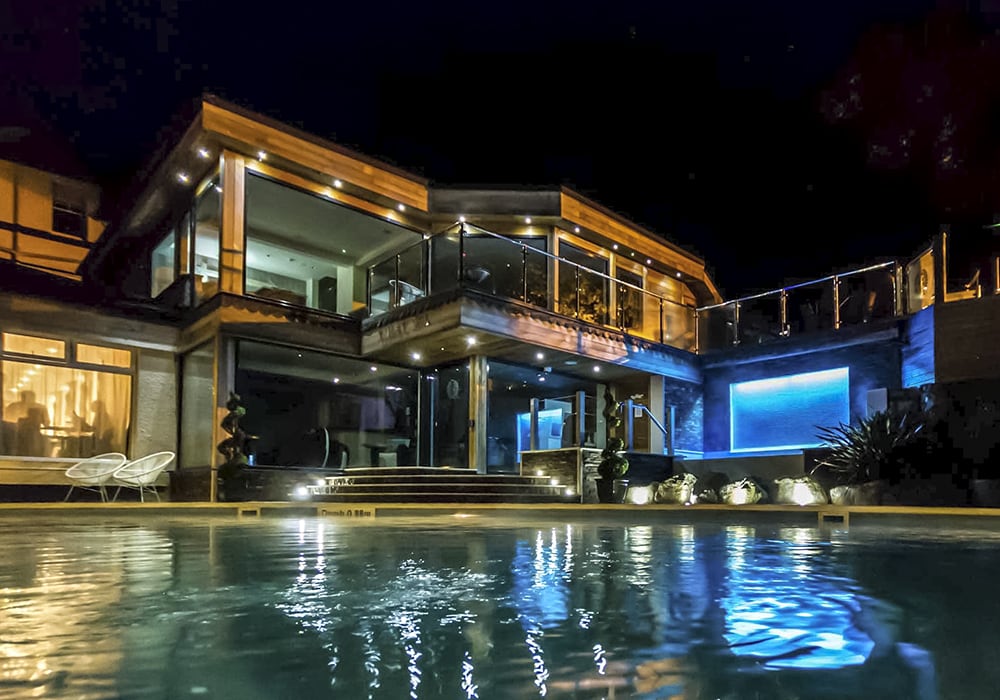

Outdoor entertaining
Having drawn the customer in, the outdoor entertainment area and gardens will help ensure that they enjoy their experience and recommend the venue to others.
For the entertainment area you need sufficient light for people to move around safely, but not too much or you will ruin any sense of intimacy.
To help create background lighting consider soffit downlights, ground lights, wall lights or even LED strip lights and then think about accent lighting to highlight interesting features. You must also provide lighting for paths and steps, but make sure you direct the light to where it is needed and does not spill out to create glare.
A warm light for outdoor entertainment of 2700K or 3000K is generally best, but if you do want to replicate daylight for lighting a feature or a working area then consider 4000K.
The practicalities
When you start the installation it’s a good idea to use a driver so that any outdoors cabling is low voltage for safety. Also make sure that any terminals or joints are rated at IP68.
And think about control so that the outdoor lighting is only on when it is needed. At a basic level this may include PIR sensors on circuits, light sensors, on/off switching or a timer. For something a bit special installing a smart bridge between the light switch and the first light in the circuit will enable control of the lights via a smart phone.
Understanding landscape lighting will win you profitable business, whether you are the owner seeking to extend your space or an electrician who can advice and then install the solution.
